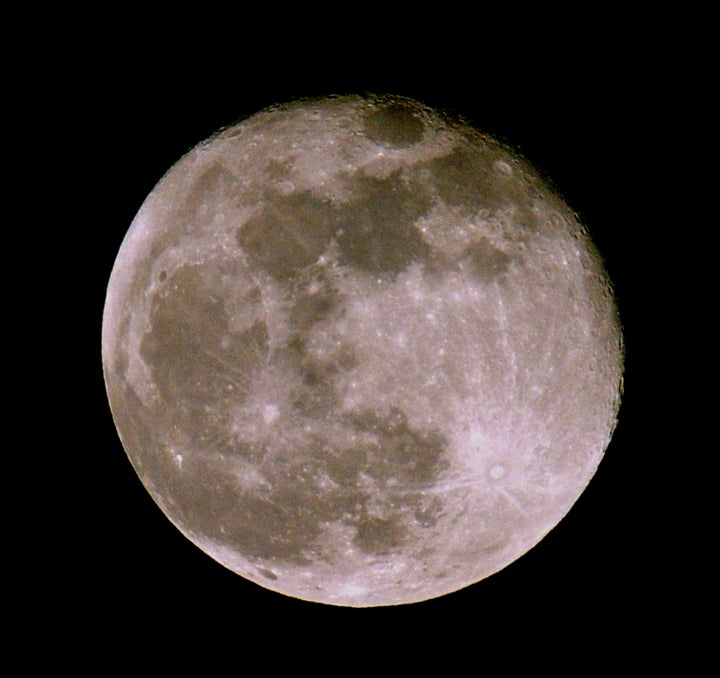
Ever since Apollo astronauts first brought back samples from the moon in 1969, scientists have been puzzled by the magnetic traces they found in the rocks.
That's because a magnetic field is the result of a dynamo, a phenomenon that occurs when liquid metal in the interior of a planet circulates and causes currents that create a magnetic field. And as Wired explains, the moon isn't big enough -- or hot enough -- for this process to occur on its own.
But two new studies published in the November 10 issue of the journal Nature offer explanations for how the moon's magnetic field may have formed.
A team of planetary scientists led by Christina Dwyer at the University of California, Santa Cruz, suggest that the dynamo occurred billions of years ago, when the moon's orbit was situated much closer to the home planet than it is now.
As Discovery News explains, the dynamo may have been caused by gravitational forces from the Earth, stirring the liquid core of the moon while the mantle rotated on a different axis.
Dwyer said if you think of the moon as a grapefruit, you can think of the moon's core as a tangerine inside that grapefruit. That tangerine is slightly tilted in relation to the stem of the grapefruit. As a result, when the liquid core rotated around its axis, it swirled against the solid mantel, giving rise to the dynamo.
"This is a very different way of powering a dynamo that involves physical stirring, like stirring a bowl with a giant spoon," Dwyer said in a release from UC Santa Cruz.
According to Wired, this went on for over a billion and a half years before the moon moved too far away from the Earth for it to power the dynamo. That's why there's evidence of a magnetic field even though it doesn't exist today.
In the same issue of Nature, Michael Le Bars and a team of scientists from Europe theorize that large impacts that changed the rate the moon rotated may have powered the dynamo.
"Each of the six large Nectarian impacts (impacts that occurred between about 3.92 billion years ago and 3.85 billion years ago) was large enough to desynchronize the moon and generate a magnetic field for about 10,000 years," Le Bars wrote in an email to Discovery News.
Although these sound like two distinct explanations about the origin of magnetism on the moon, Space.com reports that both may be correct. After all, each theory placed the level of the magnetic field on the moon's surface at 1 microtesla, which is about 1/50 the measurement of the Earth's, according to Sky & Telescope.